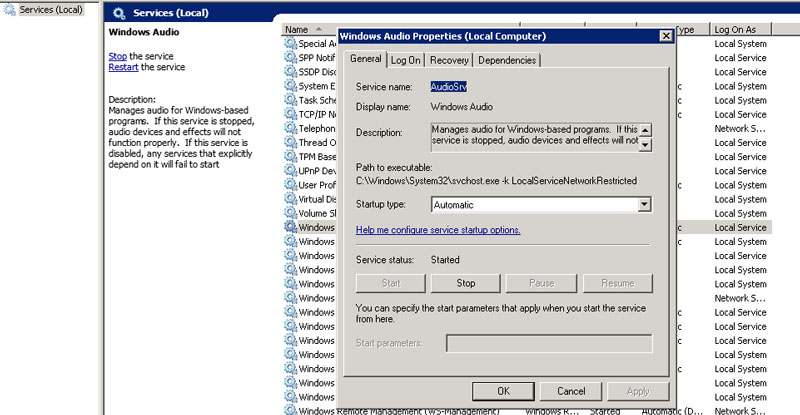

- #ENABLE SOUNDS ON MULTIMON VPS DRIVER#
- #ENABLE SOUNDS ON MULTIMON VPS FULL#
- #ENABLE SOUNDS ON MULTIMON VPS WINDOWS#
#ENABLE SOUNDS ON MULTIMON VPS WINDOWS#
If your secondary monitor is to the right of the primary monitor, and you play a game which changes the resolution of the primary monitor, the windows on the secondary monitor will be shifted to the edge of the monitor. Colorgraphic has built a 16-monitor system with Xentera GT cards, and expects to be able to run up to 64 monitors: see this thread and this thread for more information. I have tested a 12-monitor Windows XP system with 3 Matrox G450 MMS quad cards, using UltraMon for configuration. See this newsgroup thread for more information. So installing more than 10 monitors should work fine, but you would need a custom application, for example UltraMon, to configure them. The maximum number of monitors isn't known, but the often-cited limit of 10 monitors is only a limitation of the Display Properties applet, not the system as a whole.
#ENABLE SOUNDS ON MULTIMON VPS FULL#
You can disable this option on the tab for your video card under advanced display properties, Nvidia calls this feature Full Screen Video, for ATI video cards it is called theater mode, and Matrox calls it PureVideo/DVDMax. This happens if the video mirroring feature of your video card is enabled. To enable video card-specific multi-monitor modes, you usually need to disable the secondary monitor(s) connected to the video card, then open advanced display properties for the primary monitor, select the video card manufacturer's custom settings tab and select the multi-monitor mode you want to use. When using span mode, Display Properties will usually show the primary monitor running at a widescreen resolution, for example 2048x768 (2 monitors at 1024x768 each), with the secondary monitor disabled.

For example most games will only run on the primary monitor, and in span mode all monitors form a single large primary monitor. This mode is mainly useful for forcing applications which have no native multi-monitor support to use all available monitors. Most video cards only support span mode on Windows XP and earlier. Windows thinks that you are using a single monitor instead of 2 or more, and each monitor needs to use the same resolution and color depth settings, and usually also the same refresh rate. Span mode (also called stretched mode): in this mode, all the monitors connected to a single video card form a single large monitor. Clone mode is usually limited to the monitors connected to a single video card, for example you couldn't clone monitor 1 (on video card 1) on monitor 3 (on video card 2) if you have two dualhead cards installed. Very common is clone mode: in this mode, the same image is shown on 2 or more monitors. Most multi-monitor video cards (video cards which can drive 2 or more monitors) support additional, video card-specific modes. Each monitor can use different settings (resolution, color depth and refresh rate). In this mode, all monitors connected to the installed video cards form a single desktop, you can move the mouse and applications to any monitor. Windows supports a single multi-monitor mode, usually referred to as standard or extended desktop mode, also DualView or independent displays mode.


Secondary PCI video card doesn't work with Windows 2000 or later
#ENABLE SOUNDS ON MULTIMON VPS DRIVER#
Playing fullscreen video/DVD on secondary monitorsĭualhead cards and true multi-monitor support on Windows 2000Īdding multi-monitor support to a Windows 98 driver setĬan I read my e-mail on the second monitor while playing a game? Secondary screen shifts when playing game When playing a video, it is also shown fullscreen on the other monitor Stretching a PowerPoint presentation across the desktop You are here: Home > Multi-Monitor Resources > FAQ


 0 kommentar(er)
0 kommentar(er)
